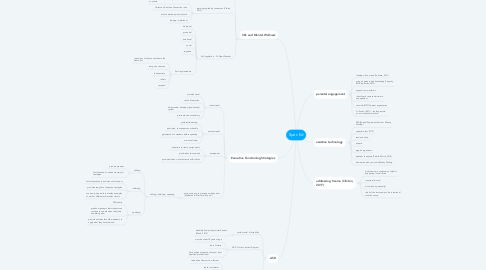
1. parental engagement
1.1. leading with our ears (Ferlazzo, 2011)
1.2. support parents with knowledge (Capacity Building Series, 2012)
1.3. expand communiation
1.4. identify and remove barriers to engagement
1.5. consider BIPOC parent experiences
1.6. Dr. Pushor (2011) - looking inward as an intentional practice
2. assistive technology
2.1. SEA (Special Equipment Amount Ministry Funding)
2.2. speech to text (OTF)
2.3. read and write
2.4. equatio
2.5. graphic organizers
2.6. freedom to explore (Sider & Maich, 2014)
2.7. be creative with your tools (Makey Makey)
3. SEL and Mental Wellness
3.1. Environment/Context [cognitive + emotional + social + physical (self)] (Stepping Stones)
3.1.1. empathy, motivation, emotional development
3.1.2. self-concepts, self-esteem
3.2. learning ignited by connection (Clinton, 2013)
3.2.1. listen to students, encourage them to listen to others
3.2.2. Correction:Direction:Connection ratio
3.2.3. holistic development of youth
3.2.4. learning is relational
3.3. Self-regulation - Dr. Stuart Shanker
3.3.1. biological
3.3.2. pro-social
3.3.3. emotional
3.3.4. social
3.3.5. cognitive
3.3.6. Self-reg framework
3.3.6.1. read signs of stress and reframe the behaviour
3.3.6.2. recognize stressors
3.3.6.3. reduce stress
3.3.6.4. reflect
3.3.6.5. respond
4. Executive Functioning Strategies
4.1. instructional
4.1.1. oral with visual
4.1.2. chunk information
4.1.3. help student develop organizational system
4.1.4. pre-teach new vocabulary
4.2. environmental
4.2.1. preferential seating
4.2.2. post rules, consequences, schedule
4.2.3. get attention of students before speaking
4.2.4. minimize clutter
4.3. assessment
4.3.1. extra time for tests, assignments
4.3.2. give breaks (movement)
4.3.3. provide written, visual instructions & rubrics
4.4. actions we use to manage our behaviour (Matheson & MacCormack, n.d.)
4.4.1. shifting, inhibiting, updating
4.4.1.1. shifting
4.4.1.1.1. provide prompts
4.4.1.1.2. limit the need to search memory for strategies
4.4.1.2. inhibiting
4.4.1.2.1. limit distractions in and around classroom
4.4.1.2.2. provide examples of adaptive strategies
4.4.1.2.3. use bump-it-up walls to display examples of work at different achievement levels
4.4.1.3. updating
4.4.1.3.1. KWL charts
4.4.1.3.2. graphic organizers that students can continue to update when they learn something new
4.4.1.3.3. provide activities that allow students to apply what they have learned
5. ASD
5.1. social model of disability
5.1.1. disability framed by societal barriers (Maich, 2019)
5.2. OAP - Ontario Autism Program
5.2.1. must be under 18 years of age
5.2.2. live in Ontario
5.2.3. have written diagnosis of autism from qualified profressional
5.3. Kluth (2010) - 10 ideas for inclusive classrooms
5.3.1. learn about learner from learner
5.3.2. teach to interests
5.3.3. give choices
5.3.4. use assistive tech where needed
5.3.5. support transitions
